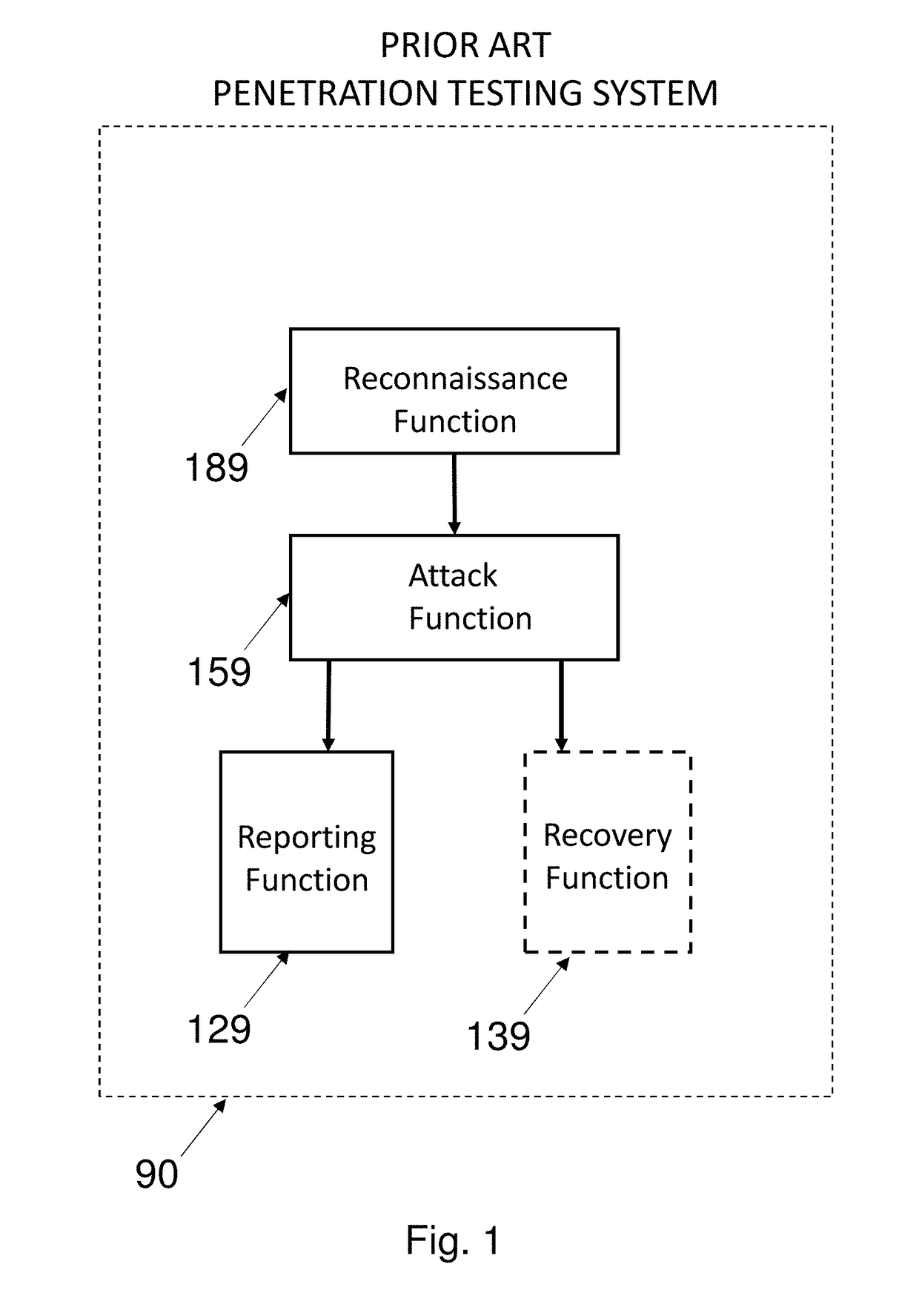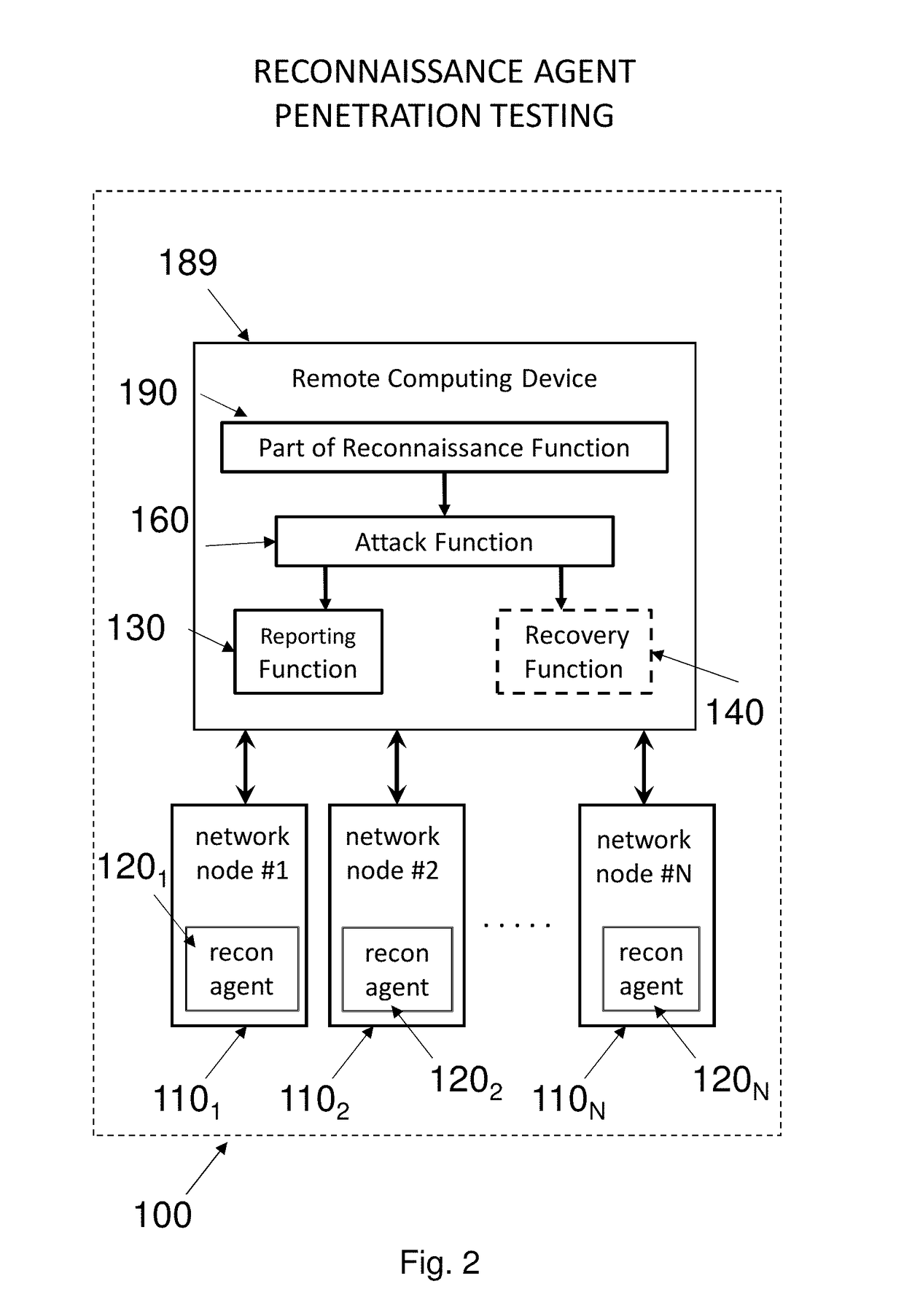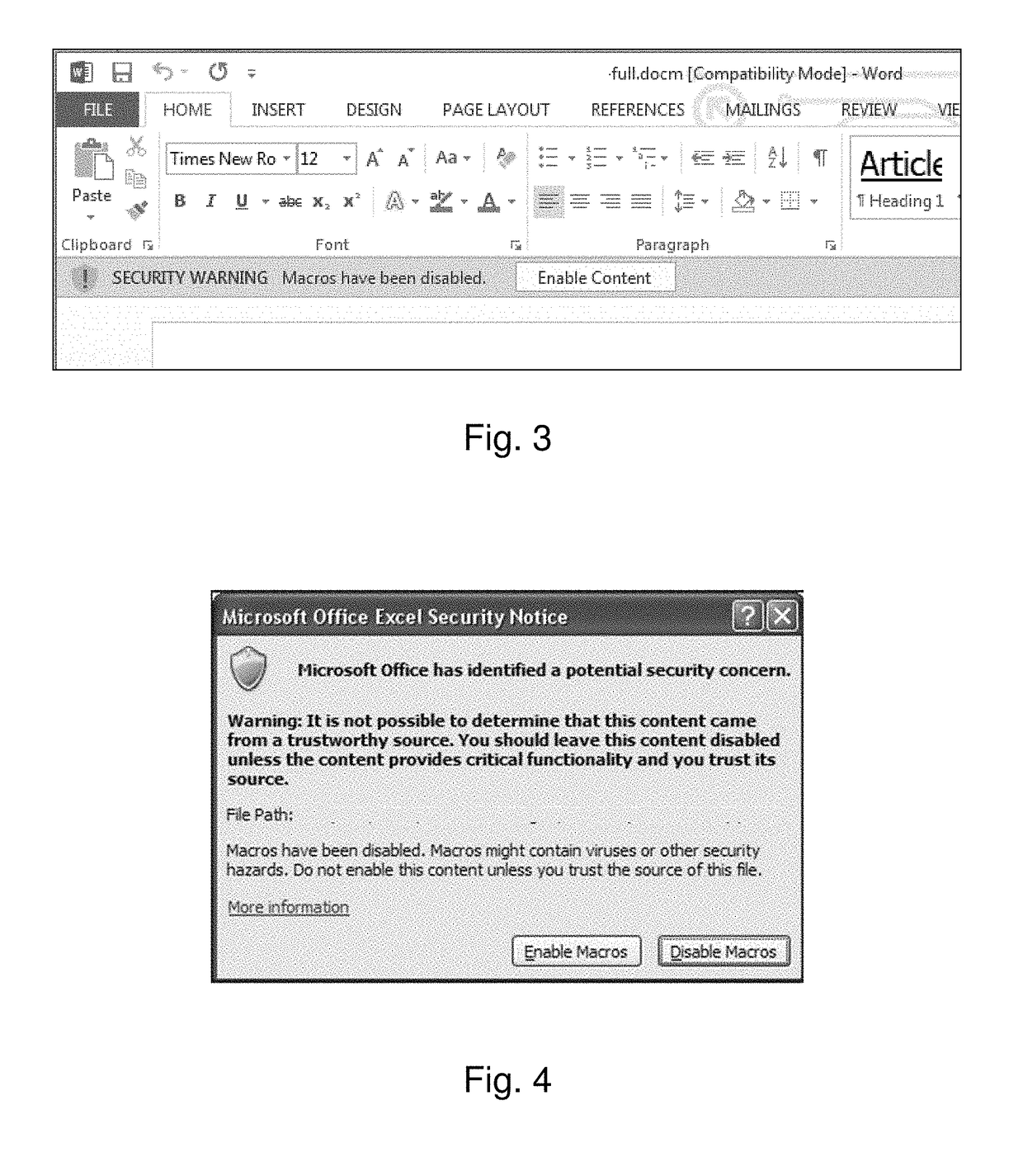Testing for Risk of Macro Vulnerability
a macro vulnerability and risk technology, applied in the field of system and method for penetration testing of network nodes, can solve problems such as significant damage, total shutting down all operations, loss of such data, and leaking such data to outside unauthorized entities, and achieve the effects of avoiding the loss of such data
- Summary
- Abstract
- Description
- Claims
- Application Information
AI Technical Summary
Benefits of technology
Problems solved by technology
Method used
Image
Examples
example 2
Determination Example 2
[0182]In an illustrative, non-limiting example, a reconnaissance agent software module installed on a network node displays ‘fake’ prompts over the course of one week, ascertaining the responses of users to “permit macro?” prompts. Because not enough of the files being opened in the network node are devoid of auto-executing macros to provide sufficient data for making a determination, the reconnaissance agent software module also ascertains the responses of users to “permit macro?” prompts that are not fake, i.e., are generated by the respective software applications because there really are auto-executing macros in the files. The software module collects the following information:[0183]Fake promptings: 4[0184]Non-fake promptings: 35[0185]User permits enabling macros: 32 times[0186]User does not permit enabling macros: 7 times[0187]Files received from computers on the same network: 22 times[0188]Files received from computers not on the same network: 17 times[0...
example 3
Determination Example 3
[0192]In an illustrative non-limiting example, making a determination that a network node is vulnerable to a macro-based attack includes making a first determination that the network node is vulnerable to a macro-based attack if at least one pre-defined condition from a list of pre-defined conditions is met, and making a second determination that the network node is not vulnerable to a macro-based attack if no condition of the list of pre-defined conditions is met. The list of pre-defined conditions consists of:[0193]the computing device belongs to the same network as the network node,[0194]the computing device belongs to the same organization as the network node,[0195]the computing device is a mobile device, and[0196]the computing device does not have the latest version of a specific security software package.
[0197]The present invention has been described using detailed descriptions of embodiments thereof that are provided by way of example and are not intend...
PUM
 Login to View More
Login to View More Abstract
Description
Claims
Application Information
 Login to View More
Login to View More - R&D
- Intellectual Property
- Life Sciences
- Materials
- Tech Scout
- Unparalleled Data Quality
- Higher Quality Content
- 60% Fewer Hallucinations
Browse by: Latest US Patents, China's latest patents, Technical Efficacy Thesaurus, Application Domain, Technology Topic, Popular Technical Reports.
© 2025 PatSnap. All rights reserved.Legal|Privacy policy|Modern Slavery Act Transparency Statement|Sitemap|About US| Contact US: help@patsnap.com



